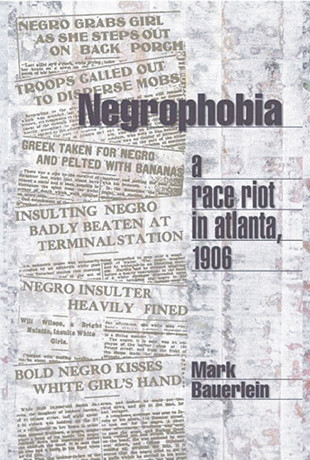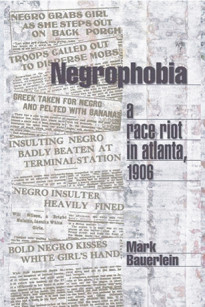At the beginning of the twentieth century, Atlanta was regarded as the gateway to the new, enlightened and racially progressive South. An atmosphere of respect and cooperation between blacks and whites and a progressive economic atmosphere made it seem that the days of Jim Crow were numbered. But Atlanta’s dream of escaping the haunting memory of civil war and human bondage was shattered in 1906, when, in the middle of a bitter gubernatorial contest, Georgia politicians played the race card and white supremacist newspapers trumpeted a “Negro crime” scare based on rumors of white women raped by black men. Atlanta slipped into a climate of race hatred and sexual hysteria, a Negrophobia that culminated in a bloody riot which left over a dozen dead, and stymied race relations and the possibility of a New South for the next fifty years.
Drawing on new archival materials and detailing the events at ground level, Mark Bauerlein traces the origins, development and brutal climax of Atlanta’s descent into hatred and violence in the fateful summer of 1906. Major figures come alive: Booker T. Washington and his great rival W. E. B. DuBois; a young Margaret Mitchell, who would later write Gone With the Wind, and Thomas Dixon, whose lurid work The Clansman helped inflame white passions and glamorized the KKK; and future NAACP leader Walter White; and an assortment of other black and white victims and public figures who witnessed and participated in this American tragedy.





